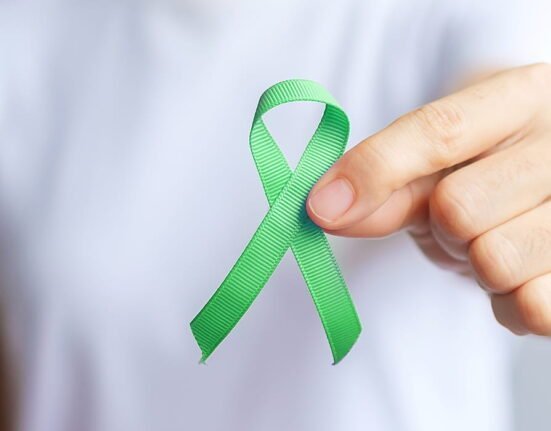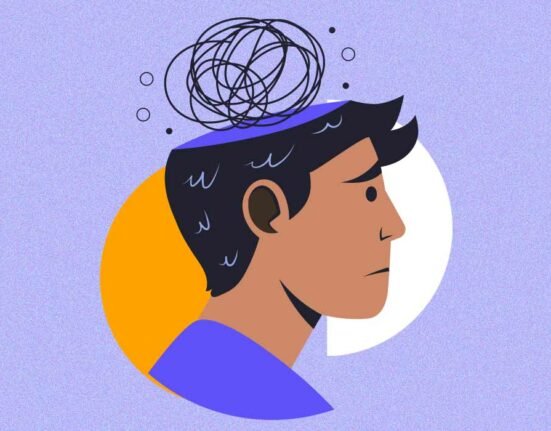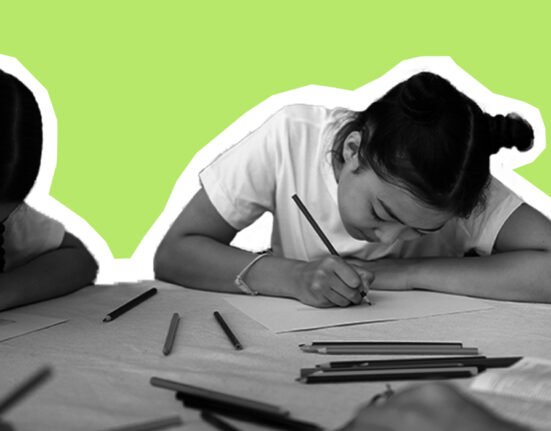In times of uncertainty, loss, hardship, or crisis, people tend to turn towards anchors that help steady their emotional imbalance. Many people throughout history and across different cultures have turned to spirituality for comfort. This may involve aspects of religious or cultural practices. Spirituality may be expressed through prayer, rituals, meditation, and/or mindfulness. People tend to move to these aspects as a means to understand their lives and cope with the hardships.
They tend to make sense of things by keeping their hope alive and by believing in a supreme being that will make things better. This entity that individuals tend to relate to may differ for people, but the belief remains the same. Hope becomes a powerful thing; many people who face extreme adversities tend to strive through these hardships, believe in a better future, and work for it only because of their hope. And having this hope encompasses them doing many religious acts and/or spiritual rituals, which in turn help improve their overall well-being.
Read More: Trance in Meditation and Prayer: A Journey Inward Toward the Self
The Psychology of Hope
The American Psychological Association defines hope as the expectation an individual has that they will eventually have positive experiences, or that a potentially threatening or negative situation will not happen, or that any negative situation will eventually lead to a positive outcome. Hope is not just wishful thinking. To have hope is to believe that things can get better and that one has the mindset and perseverance to make that happen. This definition of hope arises from the Hope Theory derived by an American psychologist, Charles Snyder, in 1994. He said, “Hope is the sum of the mental willpower and waypower that you have for your goals.”
This gives the hope theory three parts: goals, willpower, and waypower. Goals are any objects, experiences, or outcomes that an individual wants to attain. Willpower encompasses the determination and commitment that an individual has to move toward a goal and achieve it. Waypower is the mental plan one creates to reach one’s goals; it is essentially one’s planning capabilities. Thus, goals are what you hope to obtain or achieve, willpower drives the hopeful thinking, and waypower is the mental flexibility to find alternative routes if one path does not work – hence, the combination of willpower and waypower together is needed to reach the goal (Snyder, 1994).
So, when life feels unmanageable, hope acts as a lifeline. People with high levels of hope tend to have greater overall well-being. Highly hopeful people experience more positive emotions, have a stronger sense of purpose and meaning, have fewer chronic illnesses, experience less loneliness, have better overall physical health, and have a stronger relationship with others (Long et al., 2020).
Read more: How to Define Success for Yourself: The Power of Personal Goals
Prayer as an Emotional Anchor
Praying is essentially the way in which people communicate with god or the supreme being or anything else that they consider to be sacred or holy. Prayer is of great significance to religious people. At its core, prayer is an act of hope. It is the belief that one has in the existence of a higher power, a force, or a super being that listens, cares, and can intervene. This belief can act as a crucial emotional and psychological anchor in times of adversity.

Prayer is also linked to individuals having increased feelings of hope and optimism. Individuals who frequently pray report higher levels of hope, which has been associated with improved overall well-being. This sense of connection and knowing that they are not facing their difficulties alone can help ease feelings of hopelessness and despair (Pargament et al., 1998).
Prayer can also help individuals to structure and manage their thoughts, thereby allowing them to have more clarity about what is happening, which would help them in making decisions and formulating plans (Deak et al., 2023).
Praying has been linked to improved emotional regulation and better emotional balance. Prayer also helps in reducing anxiety and nerves. People are often seen turning towards prayer to find peace and emotional resilience. This act tends to foster a sense of purpose and stability in these individuals (Kopparthi, 2025).
Read More: Despair to Hope: What a person infected with HIV needs?
Rituals as Restorative Rhythms
Rituals provide a clear structure and a routine. Which then serves as a sense of comfort and control for people who are actually in the midst of uncertainty, chaos or stress. Rituals such as chanting, prayers. Meditation and communal worship have been linked to reduced stress and anxiety as well as improved emotional regulation. This helps individuals to perform intentional, meaningful actions that create a sense of security and agency within the individual, allowing their body and mind to shift from a state of heightened alertness to that of rest and recovery.
This predictable and repetitive nature of rituals is calming and fosters a sense of inner peace within individuals, helping with their personal transformation. Participation in communal religious rituals is also associated with increased social support, which serves as a protective mechanism against distress (Kopparthi, 2025). Research says that the actual act of repeating certain physical actions, rituals, helps redirect an individual’s attention from negative thoughts to the consecutive steps of the rituals. This distraction can block or hinder anxiety-inducing rumination. Further, assigning meaning to a repeated, routine action and labelling it as a ritual is more helpful and effective.
This labelling of behaviour is suggested to foster an individual’s perceived control after a loss (Hobson et al., 2017). Rituals also help individuals by allowing them to reconstruct meaning after distress. They allow individuals to channel and express their emotions, thus helping people manage their overwhelming experiences and make sense of them. Rituals also allow for complex feelings to be summarised or condensed into symbolic actions that help in healing. Thus, rituals also may act as therapeutic tools if utilised and performed effectively and with great consideration (Van Uden & Zondag, 2016).
Read More: Cultural Mourning and Grief: How Rituals Help Us Heal and Adapt After Loss
Beyond Religion
These religious beliefs and spiritual rituals have universal mechanisms that serve as the foundational psychological and social basis through which they become effective coping tools. Mindfulness, meditation, and gratitude practices all create a sense of calm and emotional stability, which further helps individuals cope with challenges. Additionally, a relaxation response that is induced post spiritual practices has many positive physical and neurological effects, such as lowering one’s heart rate, blood pressure, and stress hormone levels.
As well as the sense of belonging and social connectedness that people experience on attending religious services and/or participating in communal rituals, which reduces feelings of loneliness and isolation, and acts as a means of support. Thus, they aren’t just limited to religion but have benefits beyond the beliefs and also across various religions. So, people who don’t have religious beliefs may also benefit from such rituals. Research has suggested that spirituality plays an important role in the lives of patients and their medical care.
Read More: Indian Rituals and Their Relation to Psychology
1. Spiritual Therapy and Healing
Experimental studies on spiritual therapy have shown that patients who undergo such treatment have an increased sense of hope in life, which improves their ability to follow through with medical treatment plans and fosters a sense of purpose, thus reflecting increased survival rates (Afshar et al., 2021).

Moreover, spiritual practices like yoga, which involve a combination of physical postures, breathing exercises, and meditation, offer a holistic approach to coping with the challenges that patients face. By engaging in these spiritual practices and rituals, individuals can find purpose and significance in life, which can further help them navigate through the challenges of illness and treatment beyond the confines of any particular religion (Nagy et al., 2024).
Read More: Mindfulness, Healing, and Purpose: The Core of Spiritual Psychology
2. Cognitive Reframing Through Spirituality
Spirituality is often used as a coping mechanism by helping individuals positively reframe their experiences. Spiritual rituals can help people reframe the negative events of their lives and find a new, positive meaning. For example, A person might view difficult situations as a test of faith or an opportunity for growth rather than a punishment, and a patient might see an illness as a reason, purpose, or mission to be fulfilled rather than as ill-fated. This cognitive reframing of their circumstances can transform a feeling of helplessness, self-pity, despair, and anger into a sense of purpose and resilience. This shift in perspective helps the individual regain a sense of agency and instil hope, allowing them to cope with the difficulties (Grossoehme et al., 2012). Therapists also widely use such techniques in different therapies, thereby proving their effectiveness.
Read More: Reframing Negative Thoughts for a Positive Life
Conclusion
Science may not explain how spirituality and religious practices work, but researchers have found that they improve overall emotional well-being. Prayer and rituals create a sense of hope in people; they cultivate resilience and allow people to face adversities with courage. The hope effect thus acts as a source of strength, providing comfort and grounding individuals during challenging and distressing situations. The connection to something bigger than the self reduces feelings of loneliness and fosters a deep sense of meaning and connection. In this way, prayers, spiritual beliefs, and rituals empower people to keep going and to face any challenges that life throws their way with courage, clarity, and a reformed purpose.
FAQs
1. How does hope play a powerful role in coping?
Hope is the expectation that an individual has that they will eventually have positive experiences, or that a potentially threatening or negative situation will not happen, or that any negative situation will eventually lead to a positive outcome. This optimistic outlook towards life and negative situations helps people feel better about the future despite their current hardships and adversities. It also allows them to believe in themselves and to be able to make the best of situations and cope.
2. How do prayers and spiritual rituals help people cope?
Prayer is essentially an act of hope; it is the way in which people tend to communicate with god or the supreme being or anything else that they consider to be sacred or holy. This allows individuals to feel connected to something larger than life, and it assures them that they are not alone. Which in turn helps ease their feelings of helplessness and despair. Praying tends to foster a sense of purpose and stability in individuals and also brings them peace.
Rituals are intentional and meaningful actions that individuals perform. These actions provide individuals with a clear structure and routine, which creates a sense of comfort and control for them.
3. In what way does spirituality exist beyond the religious bounds? How does that act as a means of understanding and/or coping with the hardships?
Spiritual rituals and religious beliefs have underlying mechanisms that serve as the psychological and social basis through which they become effective coping tools. Mindfulness, meditation, gratitude practices, and communal rituals improve emotional stability, have positive physical effects, and provide a sense of belonging. This helps individuals understand their hardships better and acts as a coping mechanism against hardships.
References +
Afshar, M., Sadat, Z., & Bagheri, M. (2021). The Effect of Spiritual Counseling on Hope in Patients with Multiple Sclerosis: A Randomized Clinical Trial. DOAJ (DOAJ: Directory of Open Access Journals), 9(4), 313–324. https://doi.org/10.30476/ijcbnm.2021.88605.1523
APA Dictionary of Psychology. (n.d.). https://dictionary.apa.org/hope Chinitz, J. G., & Brown, R. A. (2001). Religious homogamy, marital conflict, and stability in Same-Faith and interfaith Jewish marriages. Journal for the Scientific Study of Religion, 40(4), 723-733. https://doi.org/10.1111/0021-8294.00087
Deak, V., Mengga, R. C., & Kharisma, S. T. T. (2023). The Role of Prayer as Spiritual-Religious Coping in the Healing Process from the Perspective of Christian Psychology. International Journal of Social and Management Studies (IJOSMAS), 4.
Grossoehme, D. H., Ragsdale, J. R., Cotton, S., Meyers, M. A., Clancy, J. P., Seid, M., & Joseph, P. M. (2012). Using Spirituality after an Adult CF diagnosis: Cognitive Reframing and adherence motivation. Journal of Health Care Chaplaincy, 18(3-4), 110-120.https://doi.org/10.1080/08854726.2012.720544
Hamman, & G. A. (1999, July 26). Prayer | Definition, History, Types, Significance, & Facts. Encyclopedia Britannica.https://www.britannica.com/topic/prayer
Hobson, N. M., Schroeder, J., Risen, J. L., Xygalatas, D., & Inzlicht, M. (2017). The Psychology of Rituals: An Integrative Review and Process-Based Framework. Personality and Social Psychology Review, 22(3), 260–284. https://doi.org/10.1177/1088868317734944
Kopparthi, G. S. (2025). Rituals, Religion, and Recovery: Exploring the Role of Spirituality in Mental Health Interventions. European Economic Letters, 5(1). https://doi.org/10.52783/eel.v15i1.2502
Long, K. N., Kim, E. S., Chen, Y., Wilson, M. F., Worthington, E. L., Jr, & VanderWeele, T. J. (2020). The role of Hope in subsequent health and well-being for older adults: An outcome-wide longitudinal approach. Global Epidemiology, 2, 100018. https://doi.org/10.1016/j.gloepi.2020.100018
Nagy, D. S., Isaic, A., Motofelea, A. C., Popovici, D. I., Diaconescu, R. G., & Negru, S. M. (2024). The role of spirituality and religion in improving the quality of life and coping mechanisms in cancer patients. Healthcare, 12(23), 2349.https://doi.org/10.3390/healthcare 12232349
Pargament, K. I., Smith, B. W., Koenig, H. G., & Perez, L. (1998). Patterns of Positive and Negative Religious Coping with Major Life Stressors. Journal for the Scientific Study of Religion, 37(4), 710. https://doi.org/10.2307/1388152
Pedersen, T. (2022, September 26). Why is hope so important? Psych Central. https://psychcentral.com/blog/the-psychology-of-hope#the-importance-of-hope
Snyder, C. R. (1994). The psychology of hope: you can get there from here. Choice Reviews Online, 32(10), 32-5941.https://doi.org/10.5860/choice.32-5941
Van Uden, M. H., & Zondag, H. J. (2016). Religion as an existential resource: on Meaning-Making, religious coping and Rituals. European Journal of Mental Health, 11(1–2), 3-17. https://doi.org/10.5708/ejmh.11.2016.1-2.1













Leave feedback about this